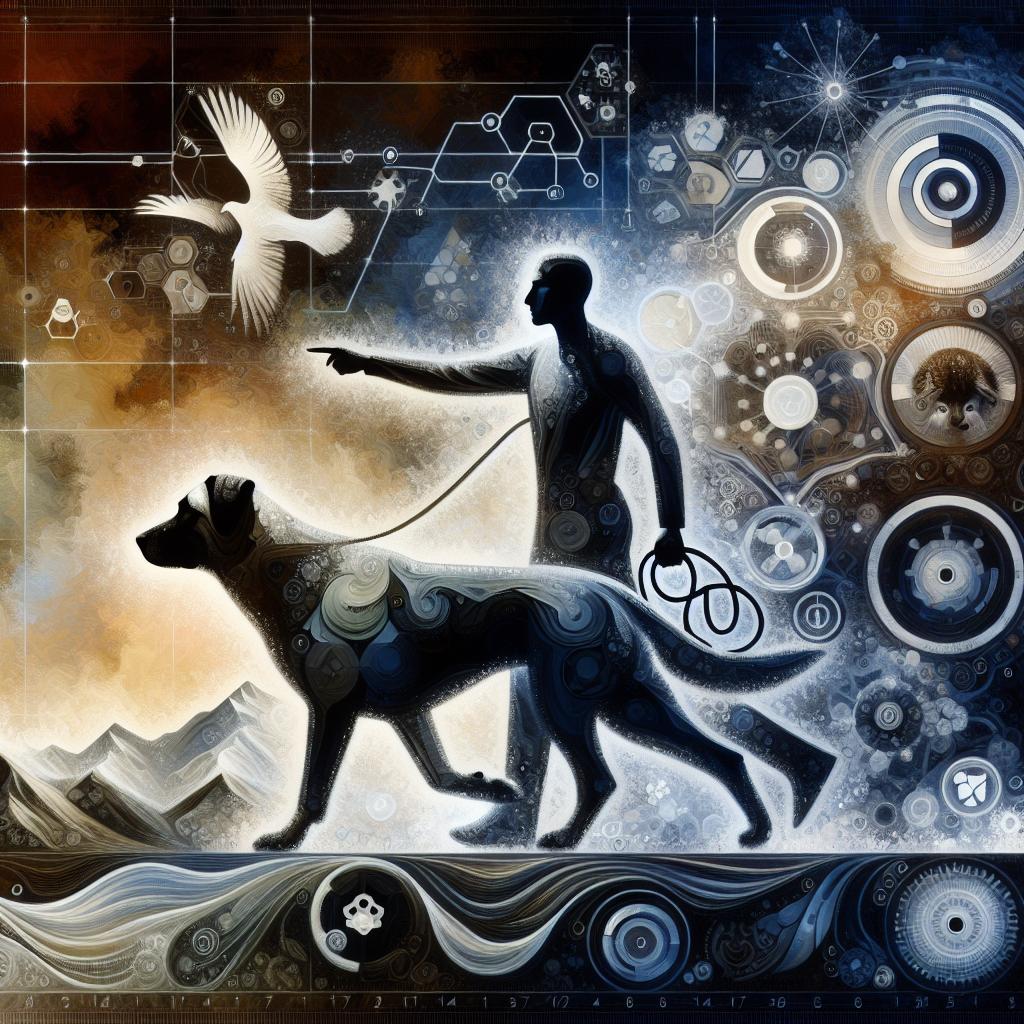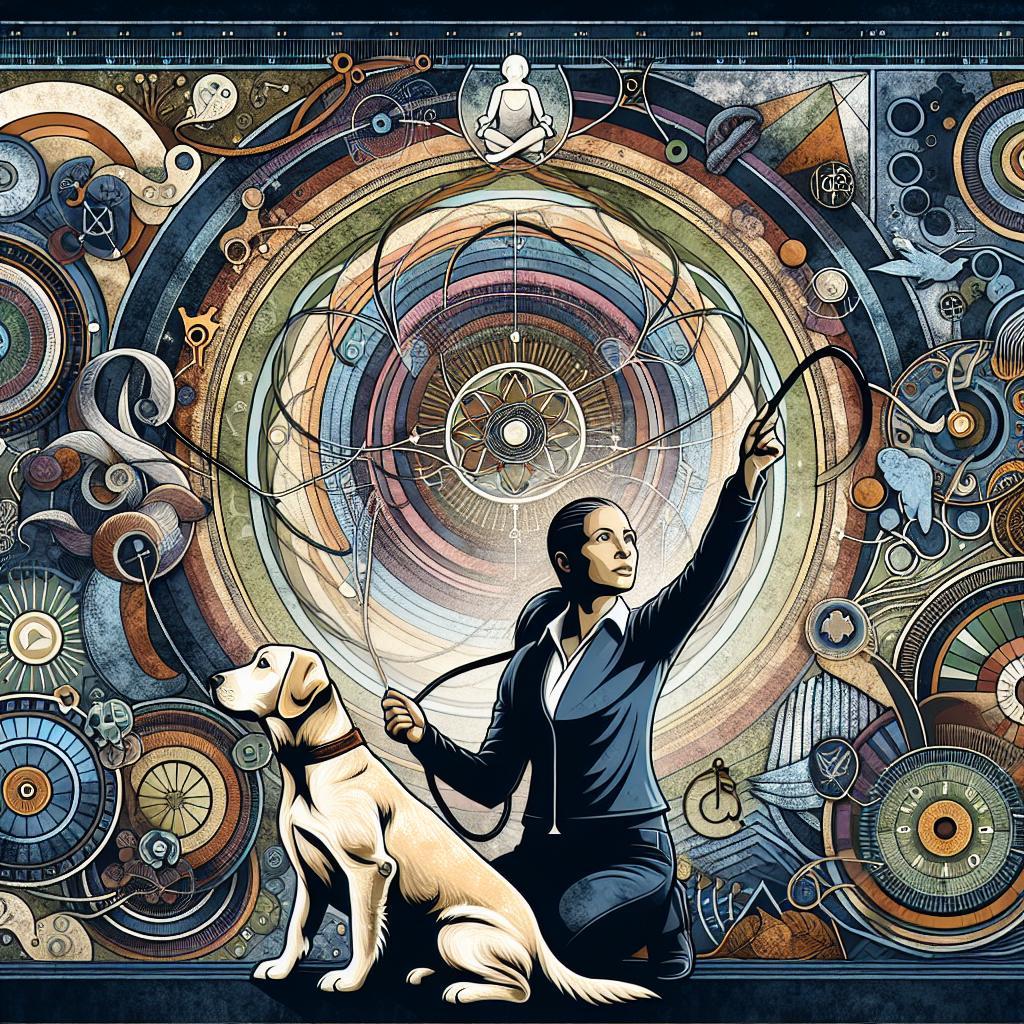The Role of Leadership in Dog Behavior Training: Finding the Balance Between Guidance and Understanding
In a world where furry companions have firmly established themselves as integral members of our families, understanding the nuances of their behavior has never been more important. The relationship between a dog and its human often hinges on the invisible thread of leadership—a dynamic that shapes not only training outcomes but also the emotional well-being of both parties. While many enthusiasts regularly embrace positive reinforcement techniques, the role of leadership in dog behavior training invites a deeper exploration into how authority and affection coexist. This article will delve into the delicate balance of leading with compassion, illuminating practical strategies that enhance training effectiveness while nurturing the bond we share with our canine friends. Whether you are a seasoned trainer or a dedicated pet parent, understanding the principles of leadership in dog behavior can transform everyday interactions into meaningful connections. Join us as we unravel this pivotal aspect of dog training, where authority meets empathy, and effective communication paves the way for lasting change.
Understanding the Foundations of Leadership in Dog Training
At the heart of effective dog training lies the concept of leadership, which sets the stage for a balanced relationship between the trainer and the dog. Establishing oneself as a leader does not mean dominating or controlling; instead, it involves fostering trust and respect. A leader in dog training embodies qualities that guide the animal towards understanding expectations and boundaries. To effectively display leadership, one must:
- Communicate Clearly: Use consistent commands and signals to avoid confusion.
- Be Patient: Understand that learning takes time, and adaptability is key.
- Show Confidence: Dogs are perceptive; they respond better to trainers who exude assurance.
The relationship dynamics in dog training can significantly impact behavior outcomes. A well-defined leadership role creates a safe environment, allowing dogs to thrive under guidance rather than fear. Additionally, good leadership encourages positive reinforcement, enabling dogs to associate obedience with rewards. Ultimately, understanding your role as a leader in this partnership will foster not only a responsive canine companion but also a deeper bond characterized by mutual respect. Here’s a simple framework for assessing your leadership qualities:
| Qualities | Impact on Training |
|---|---|
| Empathy | Encourages connection and understanding of the dog’s perspective. |
| Consistency | Helps the dog predict behaviors and responses, leading to quicker learning. |
| Positivity | Motivates and builds enthusiasm for training sessions. |

The Impact of Consistency and Communication on Behavior Modification
In the realm of dog behavior training, the synergy between consistency and communication cannot be overstated. Consistency provides a clear framework for dogs, instilling confidence and a sense of security. When trainers adhere to the same commands, cues, and reinforcement methods, dogs can more easily understand what is expected of them. For instance, a dog trained to respond to a specific command should receive the same command without variation, allowing them to form a solid association between the word and the desired behavior. This repetitive nature minimizes confusion, enabling progress in behavior modification.
Effective communication complements consistency by ensuring that the dog not only receives feedback but also understands it. Clear, positive reinforcement, whether verbal praise or treats, acts as a beacon guiding dogs toward correct behaviors. Behavioral modification can be enhanced when trainers use consistent body language, tones, and cues. For example, a sudden change in tone may confuse the dog about what behavior is being reinforced. To encapsulate this dynamic relationship, consider the following table that outlines key aspects:
| Key Aspect | Impact |
|---|---|
| Consistency | Reduces confusion for the dog |
| Clear Cues | Enhances understanding of commands |
| Positive Reinforcement | Encourages repetition of desired behavior |
| Body Language | Conveys unspoken messages to the dog |

Empowering Owners: Building Confidence Through Leadership Techniques
Effective leadership is pivotal in establishing a productive relationship between owners and their dogs. By adopting clear communication and positive reinforcement techniques, owners can not only teach their pets essential behaviors but also foster a supportive environment that encourages mutual respect. This approach allows owners to feel more confident in their roles, as they learn to lead through example. Key leadership strategies include:
- Consistency: Maintaining a steady approach enhances understanding and builds trust.
- Empathy: Understanding a dog’s needs and emotions can guide training efforts.
- Patience: Progress may be slow, but patience helps both owner and dog thrive.
Another crucial element of effective leadership in dog training is the creation of a structured environment. This not only establishes boundaries but also provides dogs with the consistency they crave. Understanding how to set clear expectations allows owners to redirect unwanted behaviors while reinforcing positive actions. Below is a simple table outlining key elements of a structured environment:
| Element | Importance |
|---|---|
| Defined Spaces | Helps dogs understand where they can and cannot go. |
| Routine | Establishes predictable times for feeding and training. |
| Commands | Clear commands help dogs respond promptly and confidently. |

Navigating Challenges: Adapting Leadership Styles for Different Dog Personalities
Understanding the unique personalities of dogs is essential in fostering a successful training environment. Each dog comes with its own set of traits, influenced by factors such as breed, upbringing, and individual experiences. Adapting your leadership style to cater to these differences can significantly enhance the effectiveness of your training efforts. For example, a confident and assertive leader may work well with a dog that responds positively to strong guidance, while a gentle and patient approach can be more effective for a timid or anxious dog. By being attuned to your dog’s personality, you can tailor your methods to cultivate trust and obedience, creating a harmonious relationship.
Different training techniques should align with the dog’s behavioral tendencies. Consider the following key personality traits and their corresponding leadership styles:
| Dog Personality | Recommended Leadership Style |
|---|---|
| Confident | Assertive and Structured |
| Timid | Gentle and Encouraging |
| Energetic | Dynamic and Engaging |
| Stubborn | Consistent and Firm |
By identifying the specific personality traits of your dog, you can shift your approach, ensuring a positive experience for both you and your pet. Emphasizing patience and understanding in your leadership not only aids in addressing behavioral challenges but also strengthens the bond between you and your canine companion.
Q&A
Q&A: The Role of Leadership in Dog Behavior Training
Q1: What is the significance of leadership in dog behavior training?
A: Leadership in dog behavior training serves as the cornerstone for establishing trust and respect between the human and canine. It creates a framework where the dog feels secure and understands what is expected of them, facilitating a productive training environment.
Q2: How does effective leadership influence a dog’s learning process?
A: Effective leadership influences a dog’s learning by providing consistent guidance and clear communication. Dogs thrive on routine, and a strong leader helps to create a predictable structure that allows dogs to learn more readily. This enhances their ability to grasp commands and behaviors quickly.
Q3: Can anyone be a good leader for their dog?
A: Absolutely! While some people may have a natural affinity for leadership, anyone can develop the skills necessary to lead their dog effectively. This involves learning how to communicate clearly, being consistent in expectations, and nurturing a positive bond through patience and understanding.
Q4: What qualities make someone a strong leader in dog training?
A: Strong leaders in dog training typically exhibit qualities such as confidence, consistency, compassion, and adaptability. They should be able to assert themselves calmly, remain patient during the learning process, and adjust their methods based on their dog’s unique needs and personality.
Q5: How does a lack of leadership affect a dog’s behavior?
A: A lack of leadership may result in confusion and anxiety for the dog. When dogs do not have clear guidance, they may exhibit undesirable behaviors, act out, or become overly stressed. This can lead to a breakdown in communication and an increased likelihood of behavioral issues.
Q6: Are there different leadership styles that can be effective in dog training?
A: Yes, different leadership styles can indeed be effective, depending on the individual dog and its environment. Some dogs respond well to a more assertive style, while others thrive under a nurturing, supportive approach. The key is to find a balance that maintains authority while fostering a positive relationship.
Q7: What role does body language play in canine leadership?
A: Body language is a critical aspect of canine leadership. Dogs are highly attuned to non-verbal cues, and leaders must be aware of their own body language to communicate effectively. A relaxed posture, consistent eye contact, and controlled movements can convey confidence and authority.
Q8: How can new dog owners cultivate better leadership skills?
A: New dog owners can cultivate better leadership skills by educating themselves about canine behavior, enrolling in training classes, and practicing consistency in their commands and interactions. Observing and learning from experienced trainers can also provide valuable insights into effective leadership techniques.
Q9: What’s the takeaway for dog owners regarding leadership in training?
A: The takeaway for dog owners is that leadership is not about dominance but about fostering a collaborative partnership with their dog. A thoughtful approach to leadership can significantly enhance the training experience, leading to a well-behaved and happy companion. By investing in their own leadership skills, owners can unlock the full potential of their dog’s learning abilities.
Q10: How can effective leadership enhance the bond between a dog and its owner?
A: Effective leadership enhances the bond between a dog and its owner by creating a relationship based on trust, respect, and mutual understanding. As owners show their commitment through consistent training and support, dogs become more secure and receptive, leading to a deeper emotional connection and a more fulfilling companionship.
Key Takeaways
the intricate dance between leadership and dog behavior training is a testament to the age-old adage that a strong foundation paves the way for lasting relationships. As we’ve explored, effective leadership goes beyond mere commands; it embodies empathy, consistency, and the ability to understand our canine companions’ needs. By cultivating a partnership built on trust and respect, we not only enhance our dogs’ learning experience but also nurture a deeper bond that enriches our lives.
As you embark on your journey of training, remember that every wag of the tail and every eager bark tells a story of connection waiting to be forged. Whether you are a seasoned trainer or a novice dog owner, embracing your role as a leader can transform the way you interact with your furry friend, shaping not just their behavior, but the very essence of your relationship. The path may be filled with challenges, but with patience and dedication, the rewards are boundless. So step forward with confidence, and let the adventure of learning together begin!

